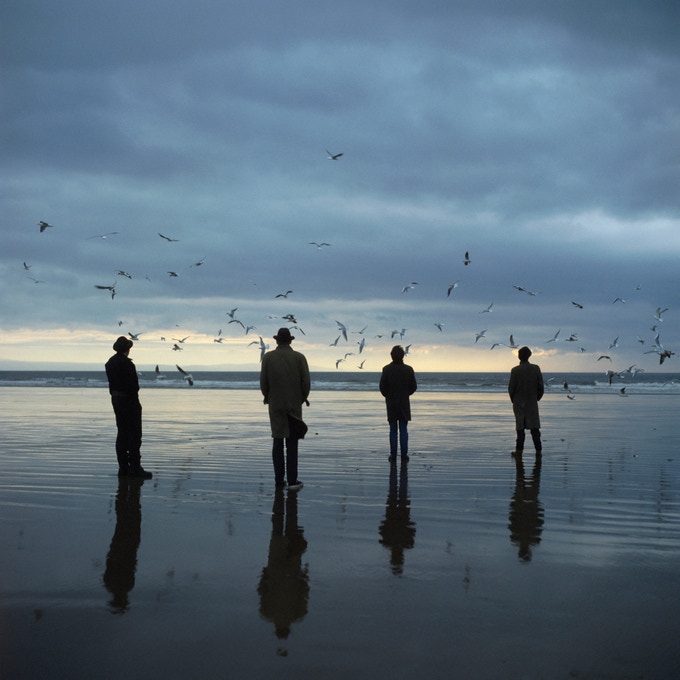On 16th of April 2021, a brilliant British photographer Brian Griffin presented an alive, physical exhibition at Residency Gallery in Islington Square in London, which is just a perfect time to, in general, represent light as an important aspect of nowadays, especially after a long Covid19 lockdown 2020-2021 in the UK. The Residency Gallery is the place where you can see Griffin’s modern but yet again, classic images of Siouxsie Sioux, Brian May, Jeremy Irons, Depeche Mode, Kate Bush, Kim Wilde, Billy Idol, Iggy Pop and among all the stars, the picture of UK’s she-devil premier Margaret Thatcher and of course, so many more, which is now open for 7 days a week until 2nd May 11am, 7pm 2021. And here is a piece of interesting information that Brian Griffin tells about Margareth Tacher. She was, in spite of all other bad political aspects, pretty appealing and attractive. Then again, apparently, there are many appealing aspects of this real alive exhibition in London, for you to see. And if you are in London, this is a great opportunity to investigate more. The gallery is on 116 Upper Street, The Angel, London N1 1AB. The right place where you can get Brian Griffin’s new book „Black Country DADA 1969-1990“, and in this book, you can read about UK’s DADA surrealist photography. I read somewhere that the photography industry itself is one big intricate creative mess. They say that photographers like to overcomplicate things due to communication confusion, which is a difficult aspect of navigation. On the one hand, it’s great that photography has become so accessible these days. But is there a standard that would assess the artistic ability and professional competence of a photographer? Many photographers will consider accreditation in the industry as some kind of proof of their legitimacy. Does exclusive membership really need some kind of tool to help narrow the field, and who is the one who makes the final decision? For me, the photographer is the one. When talking about music photography, the sub-cultural identity must be taken into account, as the visual signifier of the same. For Brian, the pop, punky sub-cultural aspect in his photography when he photographed the musicians was very important. Well, check it out yourself if you are in London.
Light is vital, it is the essence within a photograph. Most photographers do not understand this. Lighting is emotional you have to feel it,“ Brian tells in his interview. Now we can actually see how the light is essential. In the analog days, Brian made the most important impact for all other young photographers to come, with his photography. Growing up with the factories of the industrial part of the UK, popularly called the black country, studying photography in Manchester along with Daniel Meadows and Martin Parr, making a living as a photographer in the early 1970’s, a historically very important period of the UK, also seen as the dark ages, in Britain’s the gloomiest period since the second world war, in-between days of Harold Wilson’s ‘swinging sixties’ and Margaret Thatcher’s youth rebellion eighties. By the end of the 1980s Brian’s photography became known throughout the world. And this is not just because of the stars that he photographed. It is all in this book, and you can find it more of it on the page of London virtual Format Festival, https://formatfestival.com/event/black-country-dada/

The photographic standard should also be at the forefront of the creative process or applied method, but is it an important subset worth all the mention? Yes, there are a handful of elements in each session that help. It is simply a combination of the language used when photographing, setting, layering, using light, feedback, and the end result. If we go into details about all the elements … Brian’s striking images of music stars or art photography inspired by Thatcher’s social aspects of industrial Great Britain, are having a kafkaesque aspect within photography, which accompanied Brian Griffin’s illustrations of Depeche Mode album covers. A real example is Brian’s photo of Iggy Pop, which you can almost instantly associate with Kafka. This photo is not only about pretty, young Iggy Pop or his sub-cultural outrage behavior that you can read about in Brian’s book. According to Brian, photography has an emotion, its own music, which attentive viewers feel, whether it is a rebellion or a subtle political overtone of photographs from his earlier opus. His work marks an important time in modern British history and examines the complexity of Thatcher’s (non) perspective of dissatisfied youth. His work has been recognized by many stars. Focusing on the artists themselves, his relationship to the musician or actor can be understood as a cultural influence that music has had on people for decades. The photograph itself is illustrative, and the photographer is a witness as he photographs. But in general, a photographer is a storyteller who is passing on a powerful message aloud.